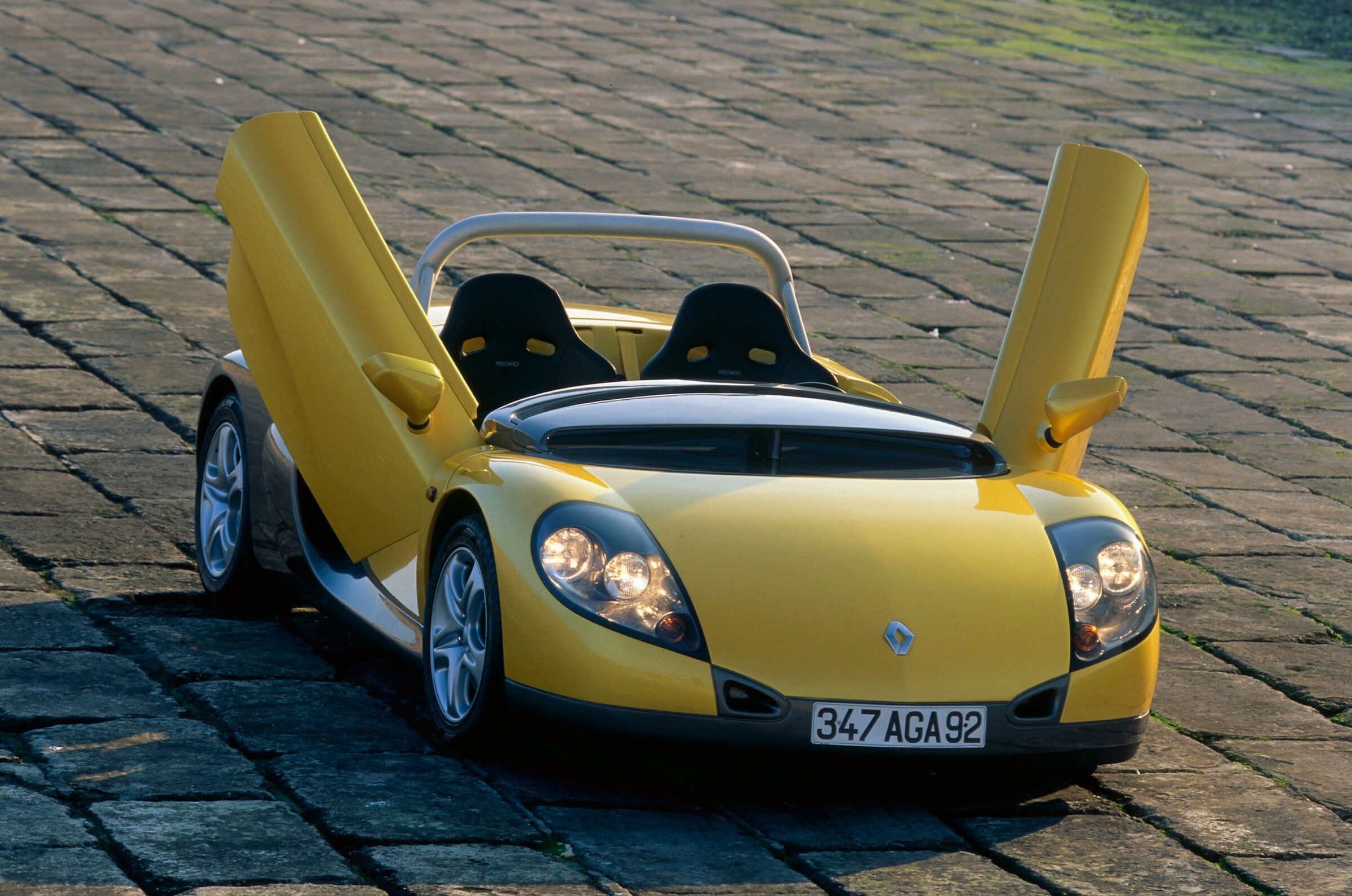65 Years of Volkswagen Karmann Ghia
When production started at the Volkswagen plant in Wolfsburg (Germany) immediately after World War 2, thanks to the strong commitment of the British major Ivan Hurst, nobody thought of further models or body variants. From 1949 on, the coachbuilders Hebmüller and Karmann succeeded in persuading the VW plant management to produce independent convertible variants, but other coachbuilders such as Rometsch, Beutler and so on didn’t receive any support from the VW factory. At the beginning of the 1950s Wilhelm Karmann spoke with the then VW boss Heinrich Nordhoff about a sporty Coupé based on the Beetle. First designs from his own design department were rather unconvincing. At the Italian coachbuilder and design company Ghia, Karmann finally saw the drawings for a sporty Coupé in pontoon design, which was originally drawn by Virgil Exner for Chrysler, but was never realized as a concept car. Karmann commissioned Ghia to adapt this vehicle to the chassis of the Volkswagen, which was tackled by Luigi Segre as well as Mario Boano and his son Gian Paolo. In 1953 a white painted Coupé prototype was ready on its wheels as a driveable prototype and was presented by Karmann to Volkswagen in Wolfsburg in November of that year. Nordhoff immediately gave the car green lights for series production, which was prepared at Karmann in Osnabrück in the course of the following year.
At the Kasino-Hotel in Georgsmarienhütte, a small town near Osnabrück in Germany, the Volkswagen Karmann Ghia was officially presented to journalists and representatives of the Volkswagen dealers for the first time on 14 July 1955. Opinions differed widely on the car, which was internally called ‘Type 14’. Contemporary reports have often remarked that the sporty appearance and the comparatively low-performance from its air-cooled four-cylinder boxer engine with only 30 hp didn’t go well together. The German car magazine ‘Das Auto, Motor und Sport’ even wrote that it is a “parody of a fast car”. From August 1955, the first Karmann Ghia units rolled off the assembly line to dealers at prices starting at 7,500 DM in Germany. Many customers already waited for them. Just one year later, the ten thousandth copy rolled off the production line. At the IAA (Frankfurt Motor Show) 1957, Karmann finally presented the Cabriolet version of the Type 14 on the Volkswagen stand, production of which began two months later at prices starting at 8,250 DM. Until the summer of 1959, the Karmann Ghia was available in its original form, which differed from the vehicles built after the works holidays by using smaller air vents at the front and small tail lights integrated into the rear wings.
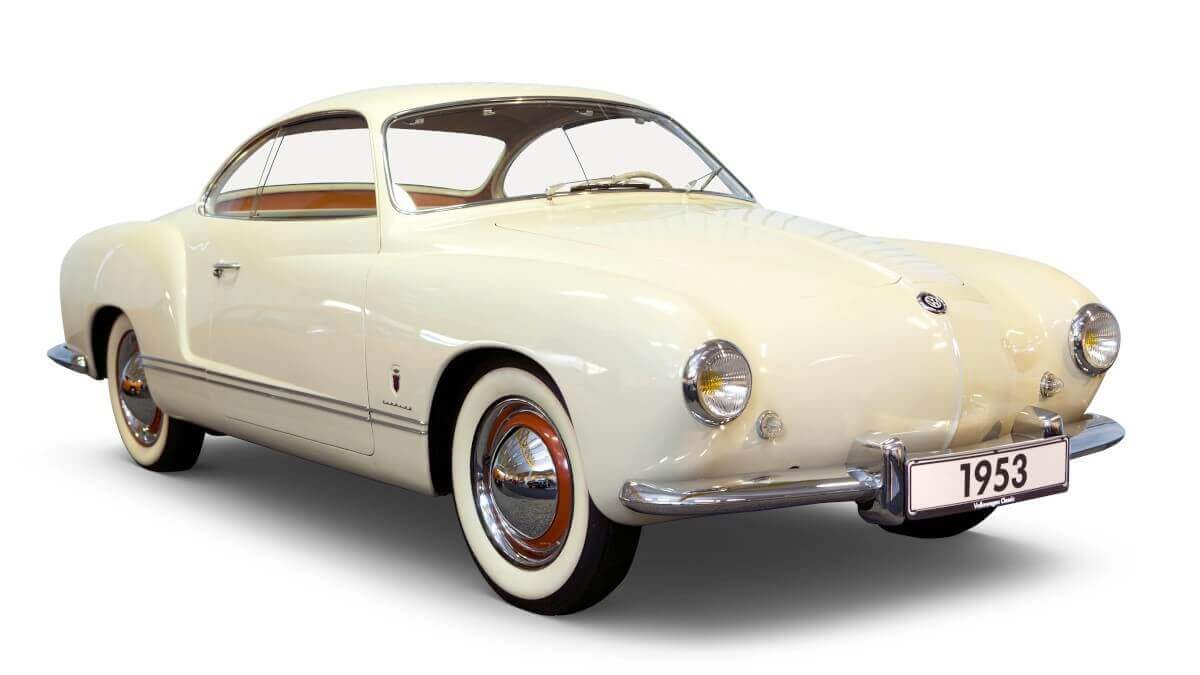



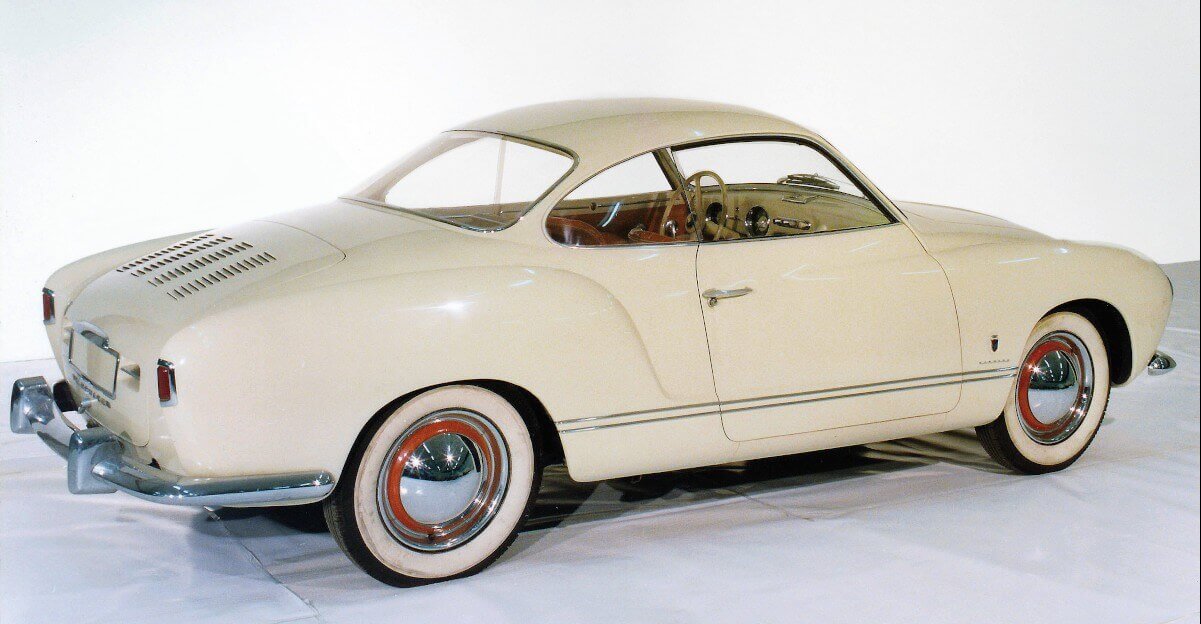











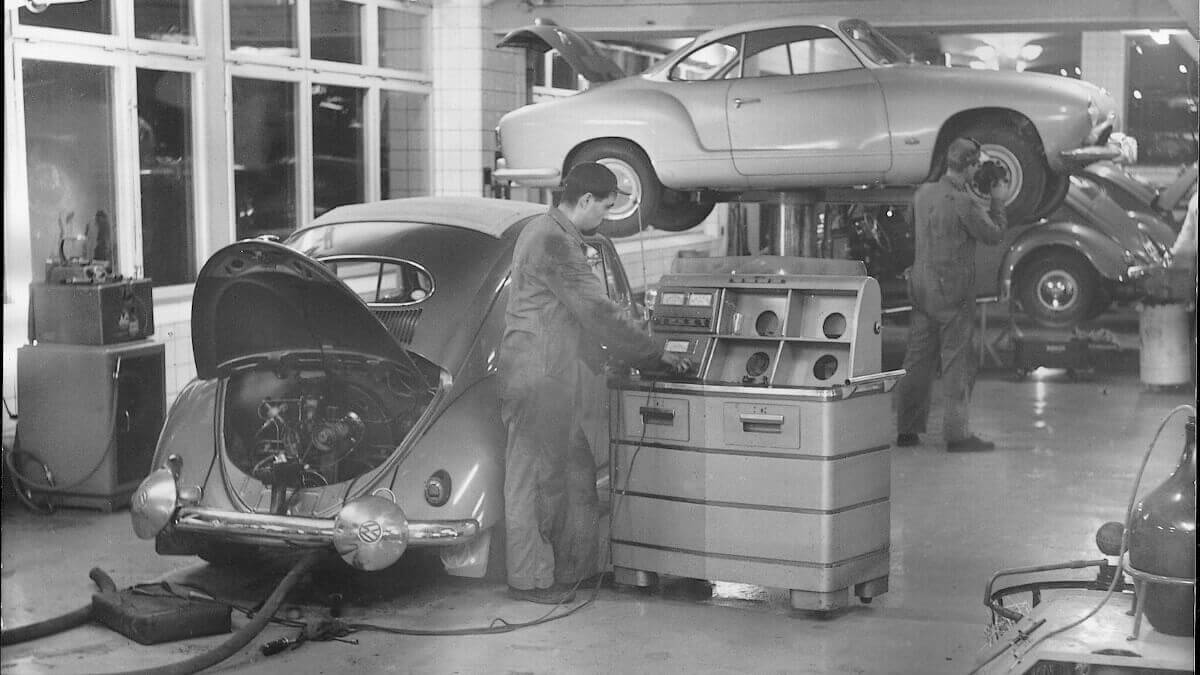











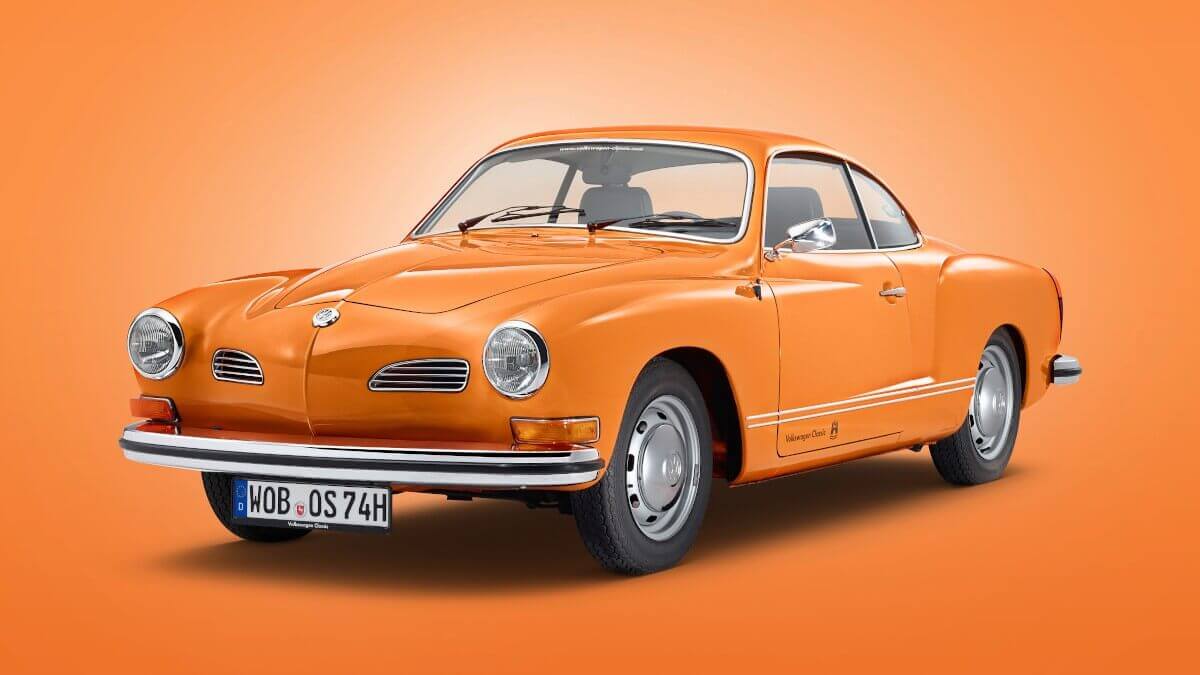

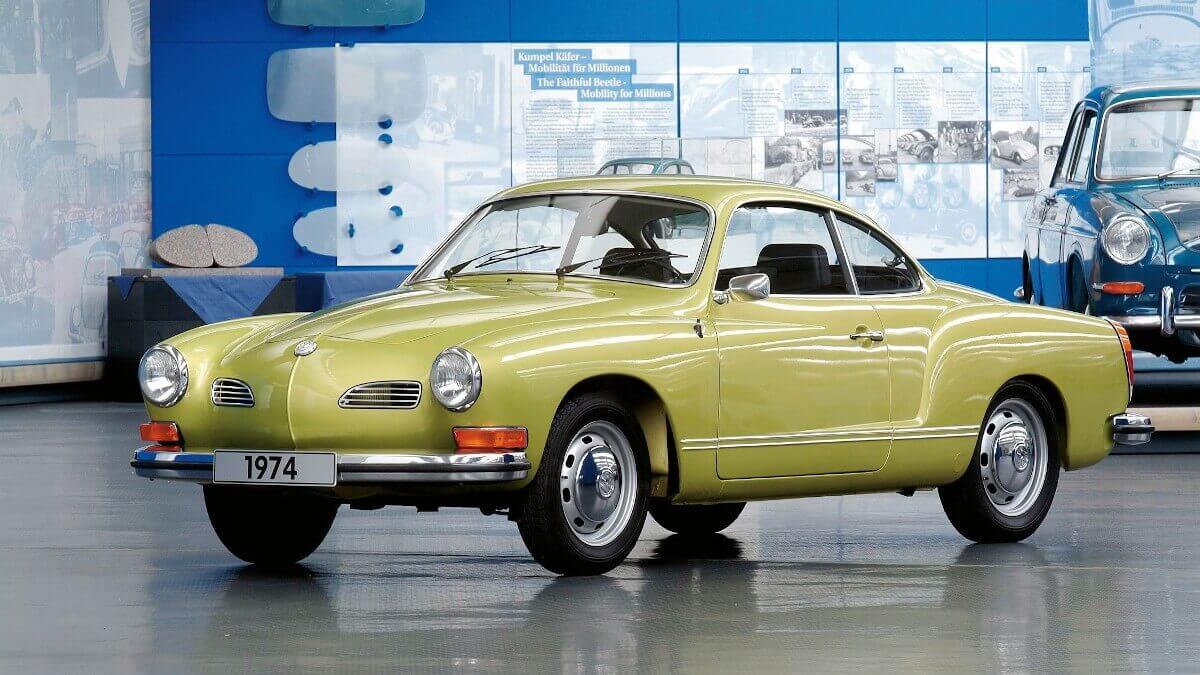

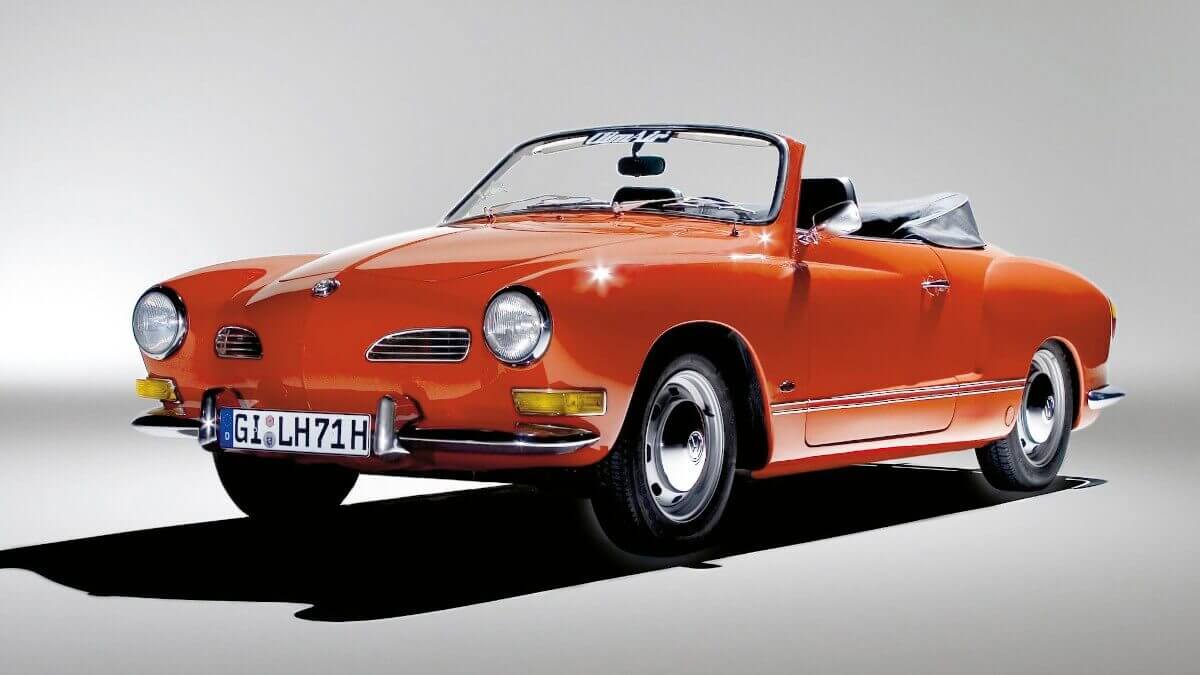



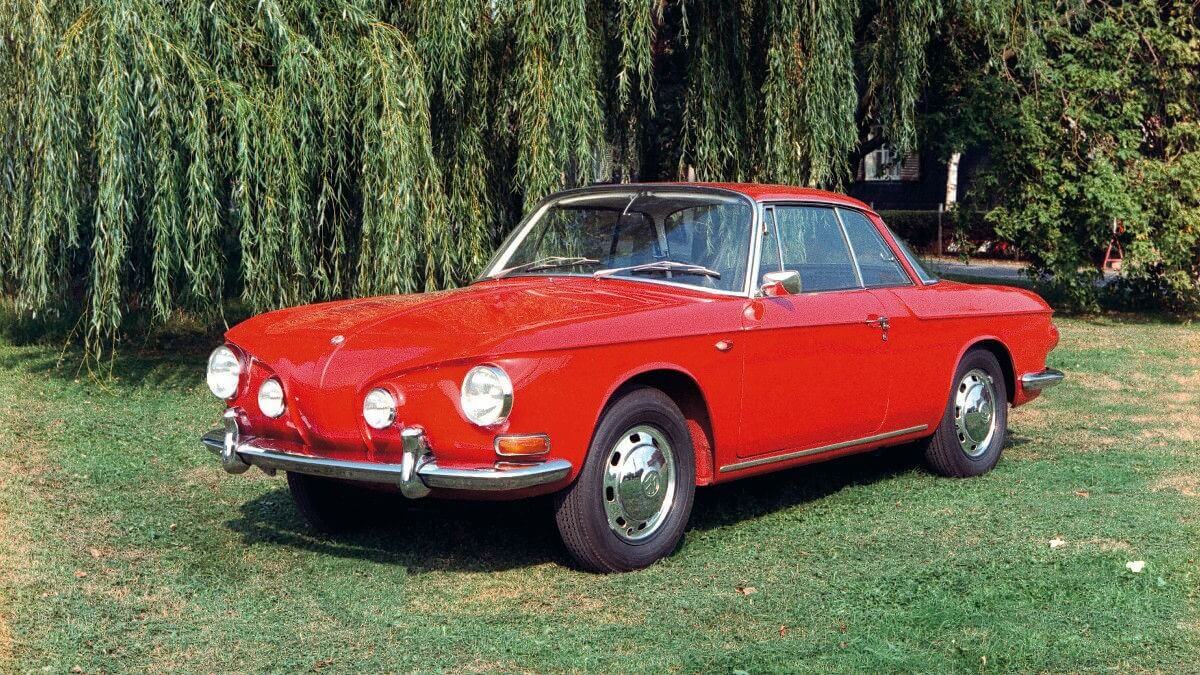





For the 1960 model year, Volkswagen had to install the headlights about five centimeters higher. In addition, the front air intakes were enlarged and their grilles chrome-plated. The larger combination rear lamps have separate chambers for tail light, brake light and indicator. Opening rear side windows, headlight flasher, armrests on the door panels and a windscreen washer system were now standard equipment. A few months later, additional production of the now 34 hp strong Karmann Ghia began at a new plant in São Bernardo do Campo, Brazil. With the larger Karmann Ghia Type 34, based on the Volkswagen Type 3 (1500 and 1600), they tried to expand the model range from 1961 onwards. However, only the Coupé went into production, while the Cabriolet, which was also shown at the IAA (Frankfurt Motor Show), was discarded after only a few prototypes. While the price of the Type 14 had been lowered to 6,935 DM, the Type 34 cost 8,750 DM and was thus clearly too expensive for many interested parties. Even a later increase in power to 54 hp didn’t help. In 1969, production of the Type 34 was discontinued after 42,505 units.
Meanwhile the Type 14 continued to enjoy great popularity. In 1965 he got the 40 hp engine from the 1300 Beetle, but after only one year it was replaced by the 1.5-liter four-cylinder with 44 hp. At the same time they finally installed modern disc brakes all around. From 1969 onwards, the Karmann Ghia went into the final production phase after a final facelift. In the front there were now square indicators and on the Cabriolet a glass rear window replaced the previous plastic window in the fabric soft top. With the 50 hp engine from the 1302 S, production in Brazil continued until 1972 and in Osnabrück until 1974, with the last two model years having enlarged front indicator lights. As the Type 34 no longer rolled off the production line in Germany, Karmann relocated some production tools to Brazil and developed the TC with fastback for the Brazilian market. By 1976, 18,119 units of the TC had been built. A total of 385,803 Coupés and 81,053 Cabriolets were built from the Karmann Ghia Type 14. More than half of the production went into export markets, with the USA in particular appreciating the vehicle very much.
Images: Volkswagen



